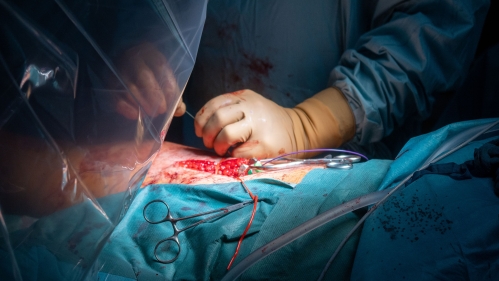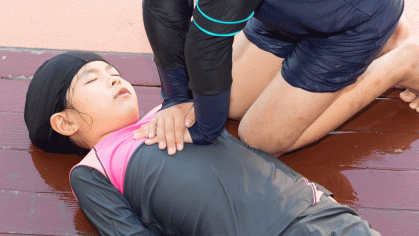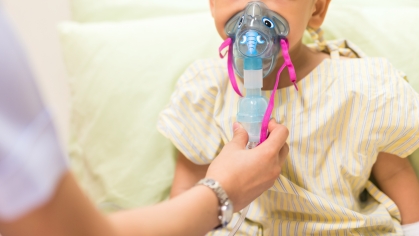A new type of bioengineered blood vessel showed strong results in treating severe vascular injuries, potentially offering vascular surgeons a better alternative to synthetic grafts when patients' veins aren't suitable for use in repairs.
In a phase II trial at Rutgers Health and other institutions, the bioengineered vessels demonstrated superior infection resistance and better limb preservation than historical results with conventional synthetic grafts. The study, published in JAMA Surgery, included both civilian trauma patients in the United States and military casualties in Ukraine.
The first U.S. implantation of the technology was performed at Rutgers under the direction of Michael Curi, the chief of vascular surgery at Rutgers New Jersey Medical School.
"This is the first bioengineered or grown blood vessel tested in human arterial reconstruction for traumatically injured vessels," said Curi, a coauthor of the study. "It adds a new option for repairing damage and will help a subset of patients who lack good standard options. Participating in these trials has let us offer this care to patients in Newark, and we will be among the first to use it in standard clinical care now that the FDA has approved it.”
The vessels, called acellular tissue-engineered vessels (ATEVs), are grown in a lab from cultured human cells and then undergo treatment to prevent immune rejection. When implanted, the patient's own cells gradually populate the vessel, making it more resistant to infection than synthetic alternatives.
The research combined two trials, one with 51 civilian patients at trauma centers in the U.S. and Israel and another with 16 military patients in Ukraine. At 30 days after implantation, about 91.5% of the vessels remained open and functioning, compared with 78.9% for synthetic grafts tested in previous studies. About 4.5% of patients required amputation, sharply lower than the 24.3% in tests of synthetic grafts.
The vessels also proved resistant to infection: Less than 1% became infected compared with 8.4% for synthetic options.
Surgeons prefer to use a patient's own veins for vascular repair, typically harvesting them from the legs. However, previous surgeries, poor vein quality and other factors often make this impossible. Also, harvesting veins takes precious time in trauma cases where rapid restoration of blood flow is critical.
"The longer they stay without blood flow, the higher the risk of limb dysfunction or limb loss," Curi said. "If we had two artery replacements that worked equally as well, one you could use straight from a box and one that took 30 minutes to harvest from someone's leg, obviously you'd much rather use the one that was available immediately."
Each year, about 185,000 people in the U.S. undergo amputation, with an estimated 45% of these patients having had a vascular injury. The availability of a readily accessible, infection-resistant vessel option could potentially reduce these numbers significantly.
The bioengineered vessels, which just won Food and Drug Administration approval as biologic products, are created using smooth muscle cells from donor aortic tissue, which are cultured in specific conditions that allow them to form a vessel structure.
"These smooth muscle cells were set up in culture to continue to live and generate new smooth muscle cells," Curi said. "By culturing these cells in a particular medium, where there is pulsatile fluid running through the scaffold, the cells grow and set up as a vessel."
The vessel's ability to integrate into the patient's tissue seems key to its success. When examined after implantation, the grafts show evidence of being populated by patient cells, creating a living blood vessel. This characteristic helps explain their resistance to infection compared to synthetic materials, Curi said.
This advantage became particularly evident in the challenging conditions of combat injuries in Ukraine. Despite the high-energy nature of battlefield wounds and difficult treatment conditions, none of the military patients required amputation, and no infections of the bioengineered vessels occurred in this group.
Research team members said while the results are promising, the studies were single-arm trials — everyone got the bioengineered tissue — rather than randomized comparisons of bioengineered tissue and synthetic material. However, the consistently positive outcomes across both civilian and military settings suggest the technology could advance vascular trauma care, they said.
The implications extend beyond trauma cases: Researchers are studying the vessels in dialysis patients and other forms of arterial reconstruction. This broader application could address a significant medical need, as many patients require multiple vascular procedures over their lifetime.
"If somebody doesn't have a leg vein that is usable, either because of biology or previous surgery, this provides another option," Curi said.




